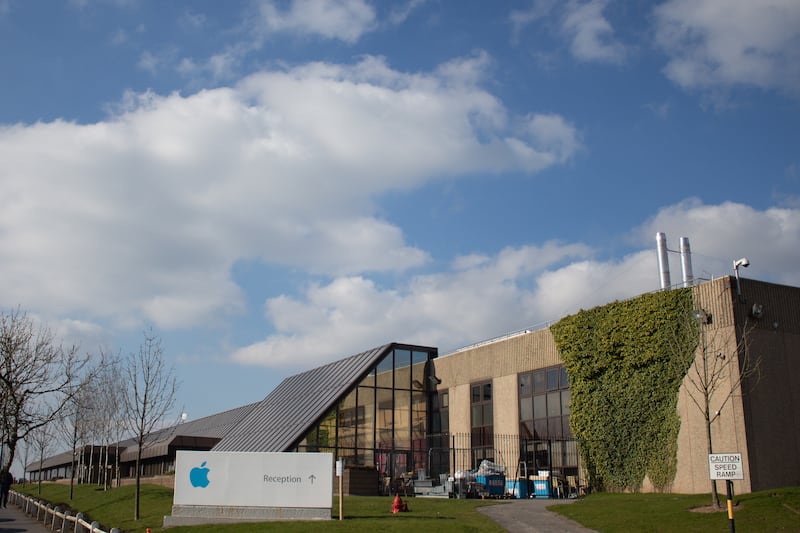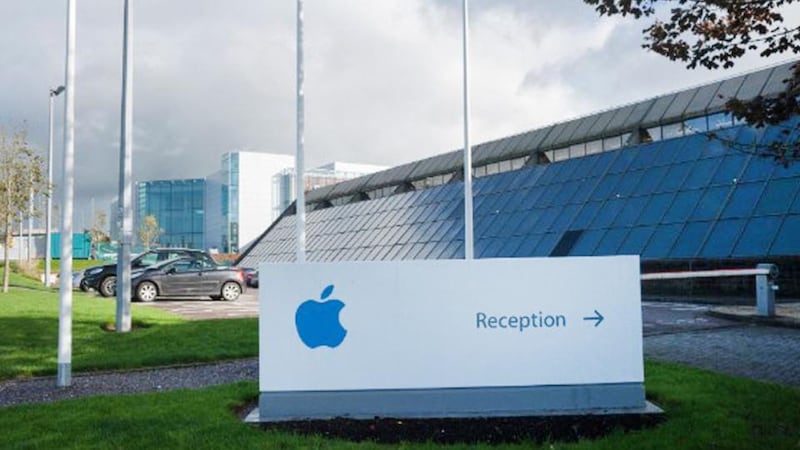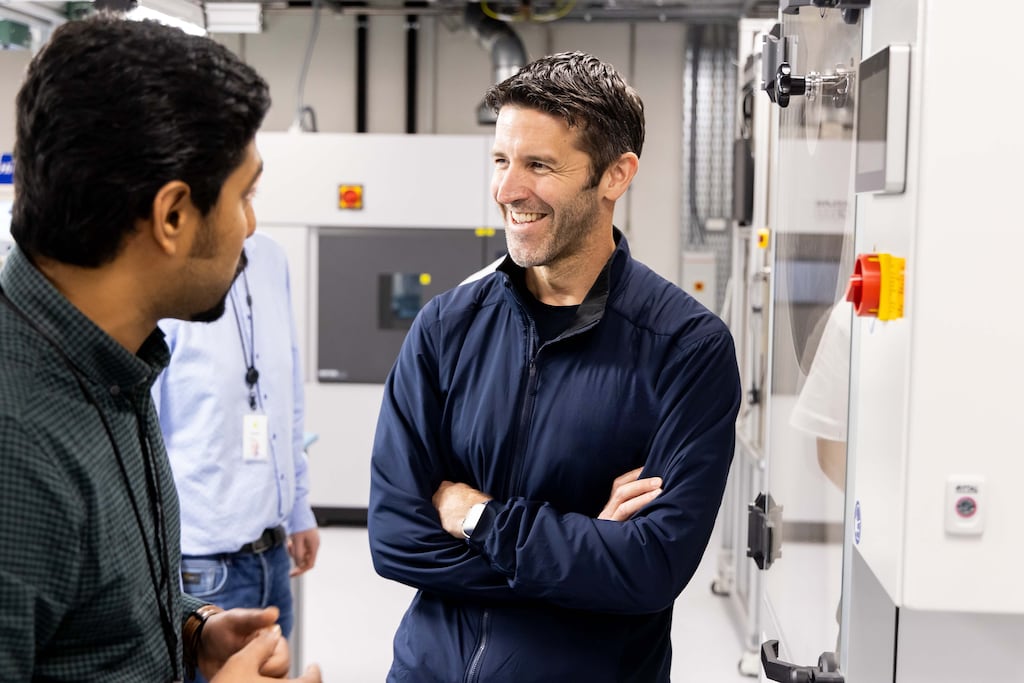Making products last longer might not be the most obvious business strategy for a technology company that has made its name on persuading people they need the latest and greatest “magical” devices.
But for Apple’s senior vice-president of hardware engineering, John Ternus, making Apple’s products last longer makes good business sense.
“I’m very happy and proud of where we are now,” he says. “I’ve been at Apple for almost 23 years, and our product quality has just gotten better and better. We have hundreds of millions of products in the field that are five or more years old, and that number keeps getting bigger. We have the proof that we’re doing it right.”
[ Apple opens engineering and test facility in CorkOpens in new window ]
The man who has been widely touted in the press recently as a potential heir to the Apple throne was front and centre for Apple’s launch of its new iPads earlier this month. That tied in with a visit to the company’s Cork campus, where Apple’s EMEA (Europe, the Middle East and Africa) headquarters is located.
RM Block
The Irish arm of the business has been in operation for more than 40 years, and while it has hit the headlines in recent years for other reasons – notably the company’s tax arrangements in Ireland that led to an investigation from the European Commission – the Holyhill site plays an important part in Apple’s global operations that extend beyond the financials.

The Cork facility is home to the company’s only wholly owned manufacturing facility in the world. Bespoke iMacs, the custom-built specifications ordered by customers rather than the off-the-shelf models, are made in the factory, with Apple staff assembling the devices before sending them off for a rigorous testing procedure. The majority of the time it spends on the factory floor will be in testing, making sure that the process has been carried out correctly and everything works as it should. That feeds directly in to the company’s focus on the sustainability and longevity of products.
Apple opened its Cork manufacturing plant in November 1980, the first for the company outside the US. Although it was a small operation initially – only 60 staff – it has grown to about 6,000. That includes research, testing, manufacturing and a sizeable Apple Care support operation.
It is now set for another phase of growth. In May 2022 it applied for planning permission to expand its footprint there, with plans for a building that could house 1,300 more people. That was given the green light earlier this year, and it is hoped to be finished next year.
Apple has set some lofty goals for its sustainability, aiming to reach net-zero carbon emissions by 2030. It has already made significant progress on lowering emissions, with its corporate emissions becoming carbon neutral in 2020. Since 2018, Apple has used 100 per cent renewable electricity for its offices, retail stores, data centres and co-located facilities, including in Cork, where it also uses rainwater for toilets and has a “zero waste to landfill” policy.
But the corporate emissions are relatively easier than other areas of the business, being the part that Apple could directly control. The company must also reduce the emissions associated with its supply chain and in the production of its products, committing to carbon neutrality by 2030, and to reducing emissions by 75 per cent from 2015 levels. To date, Apple has cut its comprehensive carbon footprint by more than 55 per cent, while revenue growth has exceeded that at 64 per cent.
[ Profit at Apple’s Irish subsidiary rises in 2023Opens in new window ]
One key part to that is making them more durable, an area where the Cork campus and its associated departments can have a direct impact. It is home to one of Apple’s testing facilities, where products are put through their paces and put under stress, often to destruction. Tipping iMacs over, blasting them with sand or salt spray, or subjecting devices to extreme temperatures is all part of the process.
Another is investigating issues as they arise, to ensure that solutions can be found. Over the years there have been some issues that have arisen with popular Apple products that required investigation to ultimately find the cause. There was “bendgate”, when some iPhone 6 models ended up misshapen. And who could forget the previous “antennagate”, where holding the iPhone 4 in a specific way led to a reduction in strength of signal.
“We’re always looking to find problems so that we can make them better. The test suite that we go through has gotten so much bigger,” says Ternus. “It’s a never-ending journey. We can always do better.”
We have hundreds of millions of iPhones in use that are second- and third-hand. They can be tremendous value for somebody
— John Ternus
Researchers in Cork have been instrumental in the process of finding the cause of some faults in devices, such as issues with hearing calls that turned out to be a crack less than the thickness of a human hair in an internal component.
All of that has contributed to the overall durability of Apple products. Add in the long software support for devices – the current iOS 17 software supports devices as far back as the iPhone XR, which was released in 2018 – and security updates that Ternus says are pushed out beyond that, and you could hang on to an iPhone for six or more years.
That may seem counterproductive, given that it will impact on Apple’s sales of new devices to those customers, but Ternus doesn’t agree.
“We have hundreds of millions of iPhones in use that are second- and third-hand. They can be tremendous value for somebody,” says Ternus. “The more happy customers that we can have who are using iPhones or iPads or Macs, the better, and we’re always going to be pushing to deliver the next great thing so that when somebody is ready for a new device, they can buy one that is state of the art and, again, can last them for a long time.”
Other manufacturers have begun to follow suit, with Google and Samsung now offering seven years of software updates for their devices in a bid to boost longevity. In this case though, Apple is pleased to see its competitors follow its lead.
“I think we’ve set a bar,” says Ternus. “It’s just better for everybody if devices work that way. There’s some things where we don’t like it when people copy us, and there’s some things when we do; we’re like, ‘Please copy us in anything associated with recycled materials, doing the right thing for the planet’. If we can lead by example, we are happy to do so.”

Apple still has some way to go to reach that 2030 goal, with some emissions unavoidable as part of the manufacturing process. While it is using recycled materials in many of its products, there is always more that can be done, particularly in the recycling process to recover elements and materials that could be easily lost. The company has come a long way though on its sustainability goals, from the days when it was being called out by environmental groups for its potential environmental impact.
To help with that though, there is carbon offsetting. That is a carefully considered strategy, Ternus says, with projects that it backs through the Restore Fund, which was set up in 2021 with an initial $200 million commitment, chosen carefully. Among the projects it backs are those that protect natural wetlands and grasslands, and support the creation of sustainably certified working forests on degraded pasture and agricultural lands in South America.
“We put a lot of work into making sure we have high quality options,” he says. “Fundamentally, the focus for me and my organisation is on the reduction part. What can we do to improve power efficiency? What can we do to use more recycled materials? But there are some challenges in this world like transportation and fuel and things like that, that we need to invest and continue to work on. Offsets are a necessary part of getting that last way.”
In the meantime, the quest to make better, more durable products will continue, aided by the Cork team.
- Sign up for push alerts and have the best news, analysis and comment delivered directly to your phone
- Find The Irish Times on WhatsApp and stay up to date
- Our In The News podcast is now published daily – Find the latest episode here





















